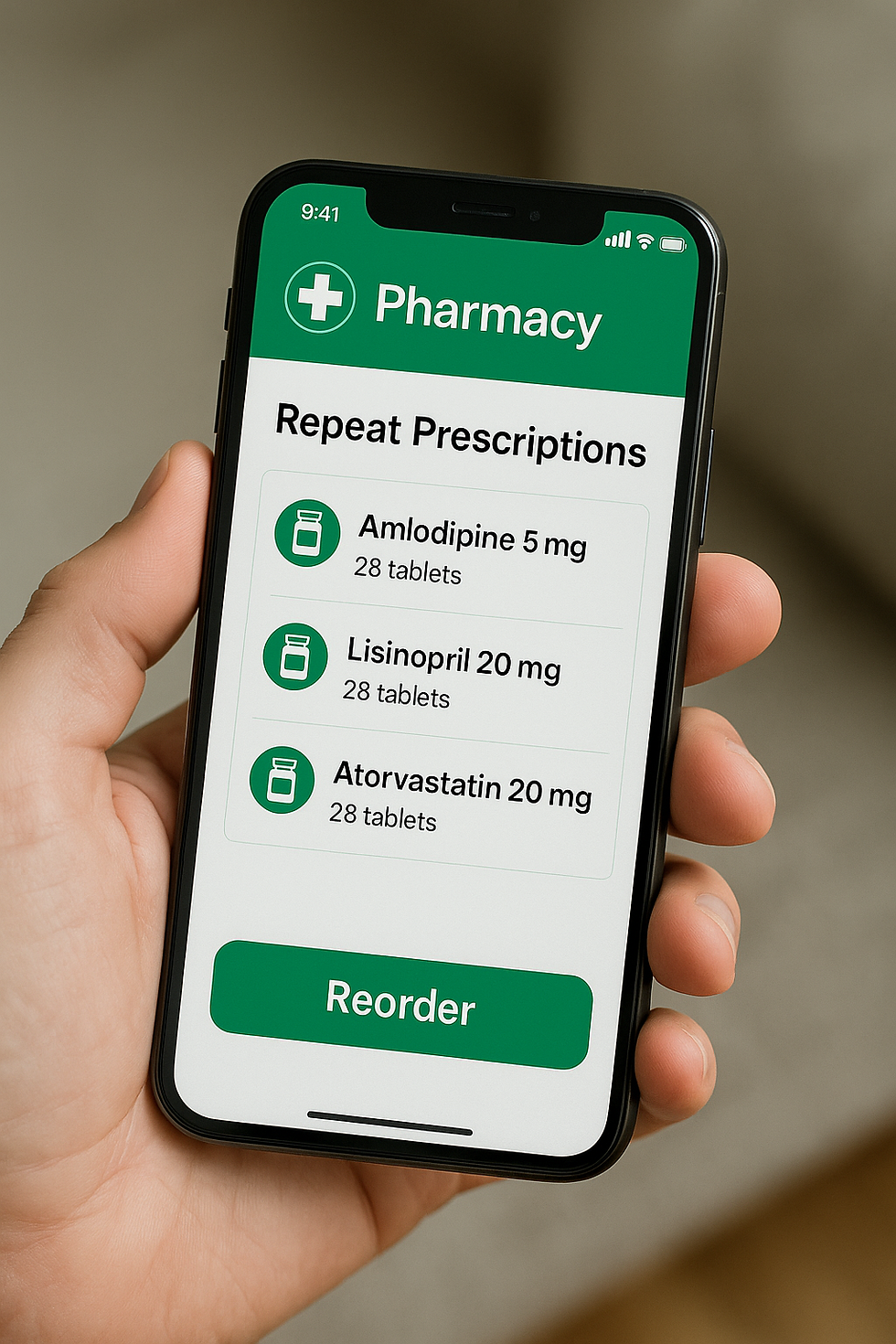HL7 FHIR: A Pharmacist’s Perspective from the EPMA Frontline
- Kyle

- Apr 8
- 4 min read
A few years ago, I first heard the buzz, 'HL7 FHIR is coming'. At the time, I’d been working with HL7 v2 messages for a while, mostly in the background via pharmacy and prescribing systems. FHIR sounded new, modern, and exciting… but as I dug into what it really was, I found myself facing a more complex reality.
It became clear very quickly: FHIR is fundamentally different from HL7 v2. And let’s be honest, change at this scale in the NHS can be daunting. I had more questions than answers...
How would we transition from HL7 v2 to FHIR?
What’s the roadmap?
Are our existing applications even compatible with FHIR?
Can system suppliers handle it?

I work in EPMA, not integration. So I knew the primary burden of a transition to FHIR would fall on integration teams, interface engines, and technical architects. But as EPMA leads, we’re not isolated from the impact, not even close. FHIR could affect how data flows into prescribing systems, how medicines are reconciled, how allergies are passed across systems, and ultimately, how safe and seamless digital prescribing is across care settings.
What is HL7 FHIR, Really?
FHIR (Fast Healthcare Interoperability Resources) is a standard developed by HL7 for exchanging healthcare information electronically. Unlike the older HL7 v2 (which sends messages in flat, pipe-delimited text), FHIR uses modern web-based technologies like RESTful APIs and JSON/XML.
FHIR structures data as modular "resources", think Patient, MedicationRequest, Observation, etc. These can be queried, updated, or exchanged in more flexible and standardised ways. In theory, it’s more interoperable, more developer-friendly, and more aligned with modern digital infrastructure.
Trepidation: Why Moving to FHIR Isn’t Simple
When I first started reading up on FHIR, the potential sounded promising, but the real-world implementation? Difficult. Where to start??
These are a few of the early questions that stuck with me:
Is our current EPMA system even FHIR-compatible?
Do our suppliers have a migration plan, and have they shared it?
How will integration teams map existing HL7 v2 workflows to FHIR equivalents?
What kind of testing, data validation, and reconfiguration will be required?
Even now, a few years down the line, we haven’t made a meaningful transition. We still rely on HL7 v2 for our EPMA integrations. And as far as I can tell, the timeline for moving to FHIR remains fuzzy.
Impact on EPMA: What Does FHIR Change?
On the surface, FHIR affects integration more than EPMA itself, but that doesn’t mean EPMA is unaffected.
Here’s where FHIR could touch our space:
Medication Interoperability:
Sharing prescriptions between systems (e.g., acute to community or between Trusts) becomes more possible with FHIR.
Allergy and Medication History:
FHIR could support better access to shared care records, improving medicines reconciliation.
Real-Time Data Exchange:
Systems could potentially “query” the latest medication list or allergy status rather than waiting for HL7 messages to arrive.
From a technical standpoint, the way FHIR data is structured may require changes to how EPMA vendors build their APIs and handle inbound/outbound data. And that, in turn, could mean changes to configuration, workflows, or even the user experience.
What Can We in EPMA Do to Help?
We may not be integration specialists, but we can support the transition in practical ways:
Ask the Right Questions:
Start the conversation with suppliers
'Are you FHIR-compatible? Do you have a roadmap?'
Engage with Integration Leads:
Understand how FHIR might affect your Trust’s current architecture. Help prioritise use cases that involve medications.
Prepare for Testing:
Be ready to test FHIR-based flows once they’re developed, especially for medication requests, administration, and allergies.
Stay Informed:
FHIR evolves. The UK FHIR implementation guidance (UK Core) is regularly updated. It is worth staying loosely aware of what’s changing.
Are There Any Mandatory FHIR Requirements?
Yes. Over the past few years, the NHS has been encouraging more and more use of FHIR.
Some of the main things to know are:
NHS England’s Interoperability Strategy makes FHIR central to its vision for joined-up care.
The NHS Data Standards Directory lists FHIR (and the UK Core Implementation Guide) as the preferred format for APIs and messaging.
For new integrations, particularly involving shared care records, FHIR APIs are often mandated.
Some GP Connect APIs and Shared Medicines Record projects already use FHIR under the hood.
That said, FHIR isn’t always enforced for legacy systems yet, which is why many Trusts, including mine, still run largely on HL7 v2. But the direction of travel is clear: FHIR is the future, and suppliers will need to move towards it if they want to remain compliant and interoperable in NHS environments.
Final Thoughts
FHIR isn’t just a new messaging standard, it’s a paradigm shift. For those of us working in digital pharmacy, we may not be writing code or building APIs, but we have a role to play in asking the right questions, keeping the conversation going, and ensuring EPMA systems don’t get left behind.
The move to FHIR might feel slow right now, but when it comes, it will likely come fast. So the more we prepare, the smoother it’ll be when the time arrives.




Comments